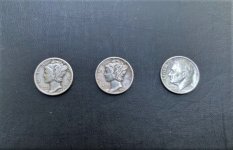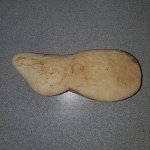Chagy
Bronze Member
Hello everyone,
On account of a hurricane prevelant in the month of September, the almiranta of the fleet of Nueva Espana (New Spain), was shipwreck on the shoal of Aborojos (this is "La Concepcion" found by Burt Webber in 1979 in the Silver Shoals in DR); Five more shipa were (either) stranded or sunk onthe Coast of Florida and two other on the island of Cuba. Many people perished.
"Hurricanes of ther Carribean" by Jose Carlos Millas he uses as source: "Armada Espanola" by Cesareo Fernandez Duro who uses as source: the Spanish archives: Coleccion Navarrete, t. VII, num. 23, and Coleccion Jesuitas, t. XVI pags 220 & 311
The Fleet tons cannons
Capitana Santissima Sacramento 350 26
Almiranta cocepcion 350 20
Galeon San Antonio 300 16
Galeon Rosario 300 16
Galeon Candelaria 300 20
Nao Santa Ana 200 11
Nao San Jose 200 12
Nao N.S. de la Pena de Francia 170 10
Patache Presa 100 6
I also found this: September 27, 1641 - After passing over the Florida Straits, a hurricane wrecks five ships. The storm produces tropical storm force winds and rough seas along the northeastern portion of the state.[4]
http://en.wikipedia.org/wiki/List_of_Florida_hurricanes_(pre-1900)
We have a few good wrecks from the 1600s in the east coast of Florida. We need to keep our eyes open for any artifacts from the 1600s that can give us clues as to where these wrecks could be. Mr. Armstrong shared with us his findings from 1600s on the east coast....Does anyone else have any stories of findings from the 1600s that can share with us, old newpaper articles, fisherman stories, old man stories, etc., etc...
All the best,
Chagy.......
On account of a hurricane prevelant in the month of September, the almiranta of the fleet of Nueva Espana (New Spain), was shipwreck on the shoal of Aborojos (this is "La Concepcion" found by Burt Webber in 1979 in the Silver Shoals in DR); Five more shipa were (either) stranded or sunk onthe Coast of Florida and two other on the island of Cuba. Many people perished.
"Hurricanes of ther Carribean" by Jose Carlos Millas he uses as source: "Armada Espanola" by Cesareo Fernandez Duro who uses as source: the Spanish archives: Coleccion Navarrete, t. VII, num. 23, and Coleccion Jesuitas, t. XVI pags 220 & 311
The Fleet tons cannons
Capitana Santissima Sacramento 350 26
Almiranta cocepcion 350 20
Galeon San Antonio 300 16
Galeon Rosario 300 16
Galeon Candelaria 300 20
Nao Santa Ana 200 11
Nao San Jose 200 12
Nao N.S. de la Pena de Francia 170 10
Patache Presa 100 6
I also found this: September 27, 1641 - After passing over the Florida Straits, a hurricane wrecks five ships. The storm produces tropical storm force winds and rough seas along the northeastern portion of the state.[4]
http://en.wikipedia.org/wiki/List_of_Florida_hurricanes_(pre-1900)
We have a few good wrecks from the 1600s in the east coast of Florida. We need to keep our eyes open for any artifacts from the 1600s that can give us clues as to where these wrecks could be. Mr. Armstrong shared with us his findings from 1600s on the east coast....Does anyone else have any stories of findings from the 1600s that can share with us, old newpaper articles, fisherman stories, old man stories, etc., etc...
All the best,
Chagy.......







